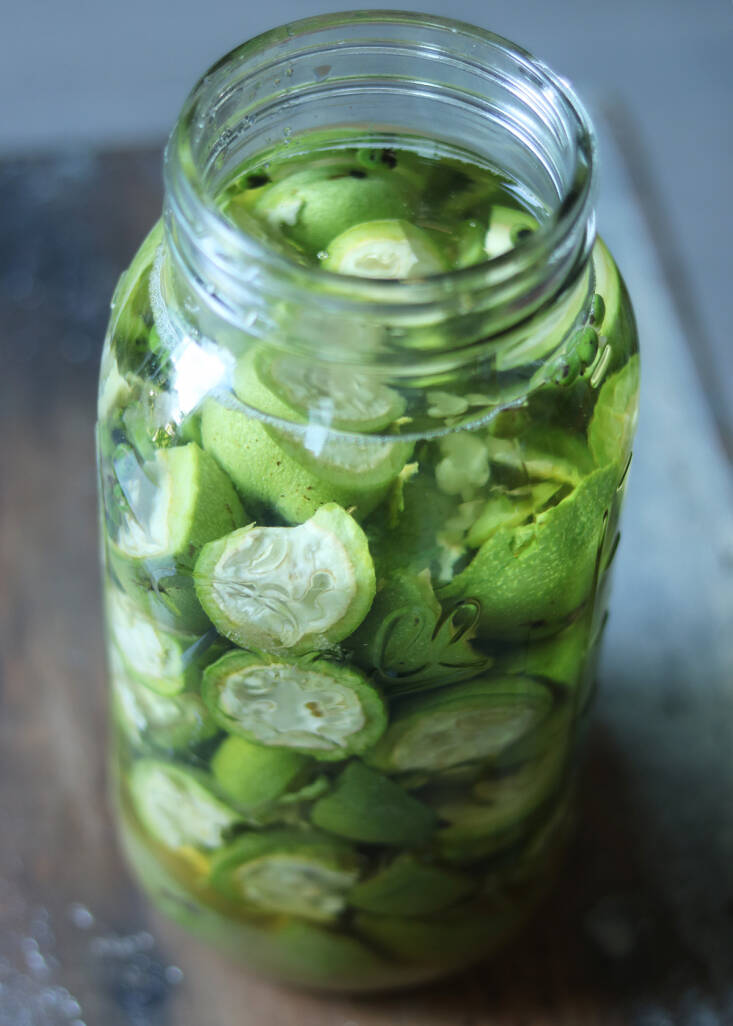Months before they ripen and drop, green walnuts are dramatically aromatic. If you chance upon a walnut tree in summer, reach up and rub a plump, green nut. The scent released is floral, wildly herbal, and instantly uplifting. Apart from that startling aroma, the immature walnuts of midsummer are also arguably easier to process and eat than their late-season iterations, whose tough, dry husks must be shucked to reveal the dry, shell-encased nutmeat within. There are several ways to preserve green walnuts (which always turn oxymoronically black), and walnut pickle recipes abound if you do a quick web-search. But my favorite green walnut preserve is sweet, where the boiled nuts bathe in a thick syrup, whose flavor is unique.
Photography by Marie Viljoen.
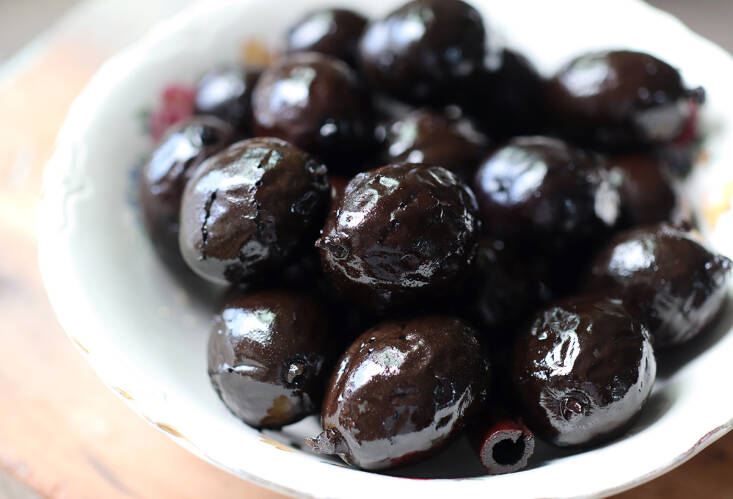
My introduction to preserved walnuts was via a tome I turn to often for culinary entertainment, for curiosities, and for lost techniques, preserved: Classic Russian Cooking, by Elena Molokhovets, and translated by Joyce Toomre (see our mugwort story for another mention). Molokhovets’ recipe calls for wooden hairpins, “soft water” and a bladder (we don’t know whose). Otherwise, the recipe makes complete sense for the 21st century. My only adaptation is it to specify baking soda for softening water, and to adjust her method for any amount of nuts, rather than for a specific weight.
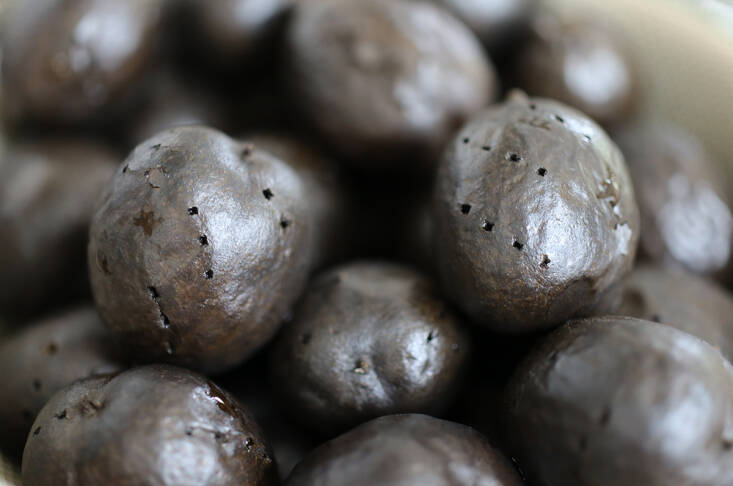
The methods for most green walnut preserves have a few steps in common, namely: Soak, boil, steep. Some call for peeling, some for pricking (I prick). And yes, all green walnuts turn deeply black. And, for weeks, so do your fingers, cuticles and nails, unless you wear gloves. Wear gloves.
But before we get to the recipe, more about the walnuts.
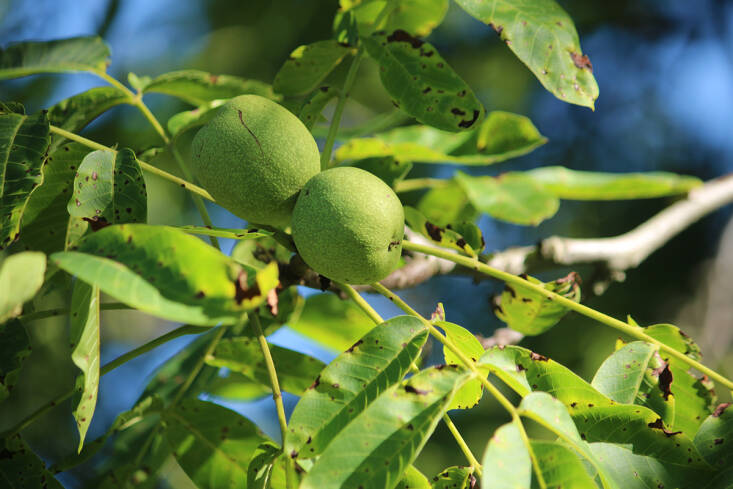
The typical nut called for in a green walnut recipe might be Juglans regia, known variously as common walnut, or English walnut. Its green husk has a smooth skin.
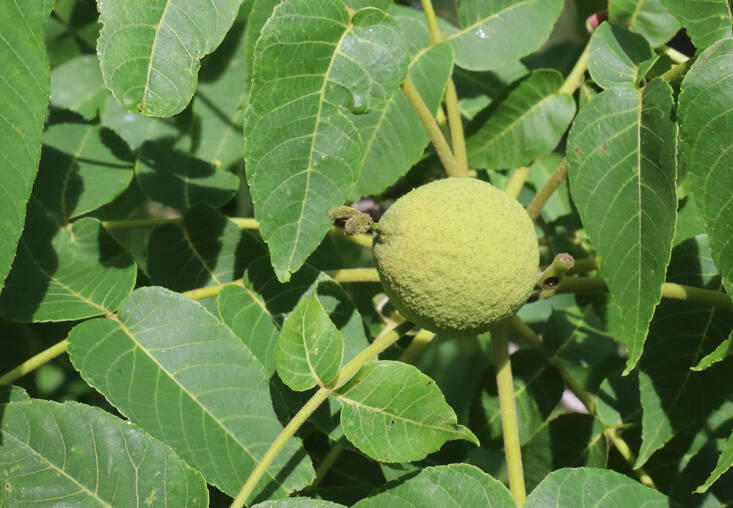
In North America native black walnuts (Juglans nigra) abound. They are similarly aromatic, but more powerful, I think, in terms of fragrance, than common walnuts. Black walnuts’ skin is distinctive and rough.
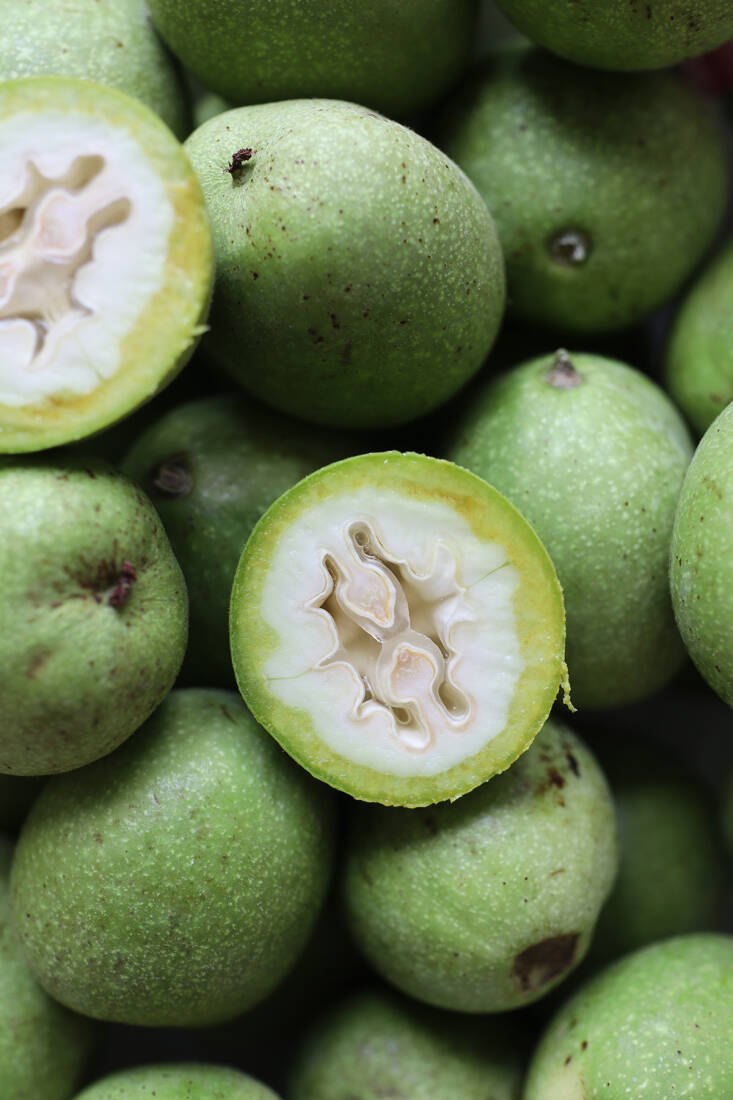
The key to making green walnut preserves or pickles is to collect sufficiently immature nuts. Their interior shell must not have begun to harden within the perfumed, protective green husk. To test whether your nut is perfect to preserve, or too mature (despite being green), slide a skewer or sharp knife (or your wooden hairpin) into its heart. It should meet with no resistance. If the shell has already begun to harden within, you’ll meet that obstacle. Even, then, all is not lost: You could still make a very fragrant and useful syrup from these nuts, but the shell itself will stay hard and will not be fun to eat. But if your skewer/knife/hairpin sails right through, it’s preserve-making time. Collect away.
